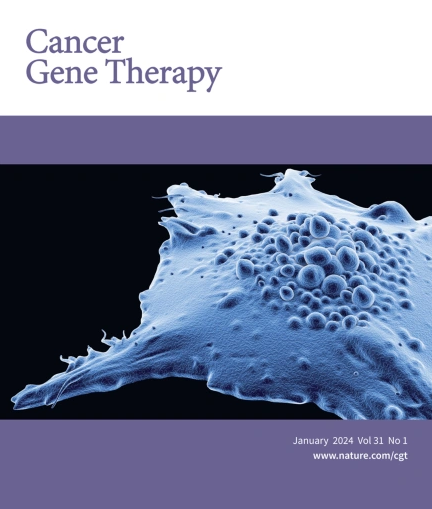转移性上皮性卵巢癌球形模型中 MYC 的可逆下调。
IF 5
3区 医学
Q1 BIOTECHNOLOGY & APPLIED MICROBIOLOGY
引用次数: 0
摘要
上皮性卵巢癌细胞脱离原发肿瘤后,可形成多细胞聚集体,也称为球体,有能力在远处建立转移灶。这些结构表现出许多适应性,可促进转移性转移并提高致瘤潜力。其中一种适应是获得休眠,其特点是增殖减少和分子特征为静止。癌症中最常见的失调基因之一是 MYC,它编码一种促进细胞增殖的转录因子。在本研究中,我们证明了与粘附细胞相比,EOC 球形细胞中的 MYC 蛋白丰度和相关基因表达量显著下降。这种下调在细胞脱落后迅速发生,并依赖于蛋白酶体。此外,当球状细胞重新附着到粘附培养表面时,MYC 蛋白丰度和相关基因表达也会恢复。总之,我们的研究结果表明,抑制 MYC 活性是 EOC 球形细胞的一个共同特征,可能有助于可逆地获得休眠。本文章由计算机程序翻译,如有差异,请以英文原文为准。

Reversible downregulation of MYC in a spheroid model of metastatic epithelial ovarian cancer
Upon detachment from the primary tumour, epithelial ovarian cancer cells can form multicellular aggregates, also referred to as spheroids, that have the capacity to establish metastases at distant sites. These structures exhibit numerous adaptations that may facilitate metastatic transit and promote tumorigenic potential. One such adaptation is the acquisition of dormancy, characterized by decreased proliferation and molecular features of quiescence. One of the most frequently dysregulated genes in cancer is MYC, which encodes a transcription factor that promotes cell proliferation. In this study, we demonstrate that MYC protein abundance and associated gene expression is significantly decreased in EOC spheroids compared to adherent cells. This downregulation occurs rapidly upon cell detachment and is proteasome-dependent. Moreover, MYC protein abundance and associated gene expression is restored upon spheroid reattachment to an adherent culture surface. Overall, our findings suggest that suppression of MYC activity is a common feature of EOC spheroids and may contribute to the reversible acquisition of dormancy.
求助全文
通过发布文献求助,成功后即可免费获取论文全文。
去求助
来源期刊

Cancer gene therapy
医学-生物工程与应用微生物
CiteScore
10.20
自引率
0.00%
发文量
150
审稿时长
4-8 weeks
期刊介绍:
Cancer Gene Therapy is the essential gene and cellular therapy resource for cancer researchers and clinicians, keeping readers up to date with the latest developments in gene and cellular therapies for cancer. The journal publishes original laboratory and clinical research papers, case reports and review articles. Publication topics include RNAi approaches, drug resistance, hematopoietic progenitor cell gene transfer, cancer stem cells, cellular therapies, homologous recombination, ribozyme technology, antisense technology, tumor immunotherapy and tumor suppressors, translational research, cancer therapy, gene delivery systems (viral and non-viral), anti-gene therapy (antisense, siRNA & ribozymes), apoptosis; mechanisms and therapies, vaccine development, immunology and immunotherapy, DNA synthesis and repair.
Cancer Gene Therapy publishes the results of laboratory investigations, preclinical studies, and clinical trials in the field of gene transfer/gene therapy and cellular therapies as applied to cancer research. Types of articles published include original research articles; case reports; brief communications; review articles in the main fields of drug resistance/sensitivity, gene therapy, cellular therapy, tumor suppressor and anti-oncogene therapy, cytokine/tumor immunotherapy, etc.; industry perspectives; and letters to the editor.
 求助内容:
求助内容: 应助结果提醒方式:
应助结果提醒方式:


